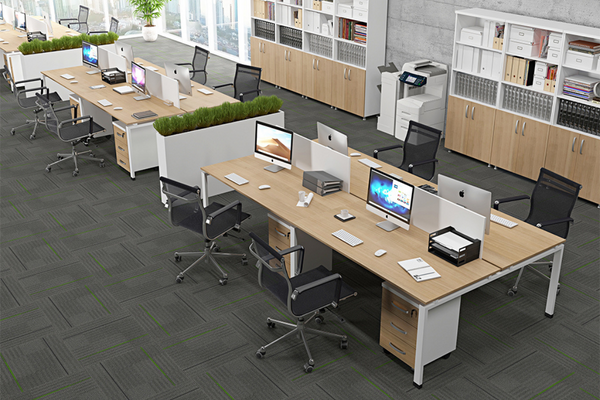Office Workstation | A Guide to Productivity and Comfort

Introduction
In today's fast-paced and technology-driven work environment, office workstations have evolved from simple desks and chairs into ergonomic, and highly functional setups.
A well-designed workstation is essential for enhancing productivity, reducing stress, and promoting employee well-being.
In this blog, we'll explore the elements of a modern office workstation, how to create an ideal workspace, and why it matters.
The Evolution of Office Workstations
Office workstations have come a long way from the traditional cubicles and rows of desks.
The modern workplace recognizes the importance of creating an environment that encourages creativity, collaboration, and efficiency.
This shift has given rise to the open office concept, agile workspaces, and the incorporation of advanced technology.
Key Elements of a Modern Office Workstation
Ergonomic Furniture
Ergonomics is a top priority when designing a workstation.
Adjustable desks and chairs that support good posture are essential.
This minimizes discomfort and reduces the risk of work-related injuries such as back pain and carpal tunnel syndrome.
Dual Monitors and Technology Integration
The use of dual monitors has become increasingly popular, as it allows for multitasking and improved productivity.
Additionally, advanced technology integration, like docking stations and wireless charging pads, streamlines the workspace and eliminates cable clutter.
Adequate Lighting
Good lighting is crucial for reducing eye strain and increasing focus.
A combination of natural and artificial lighting, as well as adjustable desk lamps, can provide optimal illumination.
Personalization
Many companies are now encouraging employees to personalize their workstations.
This can boost morale and create a sense of ownership over the workspace.
Personal items like photos, plants, and artwork can contribute to a more inviting and motivating environment.
Cable Management
Messy cables not only look unprofessional but can also be a hazard.
Cable management systems, such as cable trays, can help keep wires organized and out of the way.
Sound Control
Open office layouts often come with noise challenges.
The inclusion of sound-absorbing panels, noise-cancelling headphones, or designated quiet spaces can help employees concentrate and reduce distractions.
Creating Your Ideal Workstation
Designing an ideal workstation that suits your needs and preferences is a highly individualized process.
Here are some steps to consider:
Assess Your Requirements
Determine your daily tasks and workflow.
Do you require multiple monitors, a standing desk, or specific tools and equipment? Understanding your needs is the first step.
Choose Ergonomic Furniture
Invest in an ergonomic chair and an adjustable desk that suits your body type and work style.
Ensure that your chair provides proper lumbar support and that your desk can be adjusted to your preferred height.
Organize Your Space
Keep your workstation clutter-free.
Use organizers, cable management solutions, and storage options to maintain a clean and efficient workspace.
Personalize and Inspire
Add personal touches to your workstation to create an inspiring environment.
Incorporate artwork, plants, or motivational quotes to make the space your own.
Lighting and Comfort
Ensure that you have adequate lighting to reduce eye strain and adjust the temperature and ventilation to make your workspace comfortable.
Why It Matters
A well-designed office workstation goes beyond aesthetics – it impacts your productivity, well-being, and job satisfaction. Here's why it matters:
Increased Productivity
An organized and comfortable workspace promotes focus and efficiency.
Improved Health
Ergonomic furniture reduces the risk of musculoskeletal problems and discomfort.
Enhanced Creativity
A personalized and inspiring environment can stimulate creativity and problem-solving.
Job Satisfaction
Employees who have control over their workspace tend to be more satisfied with their jobs.
Conclusion
Creating the perfect office workstation is a crucial element of modern work culture.
By prioritizing ergonomics, technology integration, personalization, and a few key design principles, you can design a workspace that promotes productivity, enhances well-being, and inspires creativity.
Remember that a well-thought-out workstation isn't just a place to work; it's a reflection of your commitment to your job and your overall work experience.
